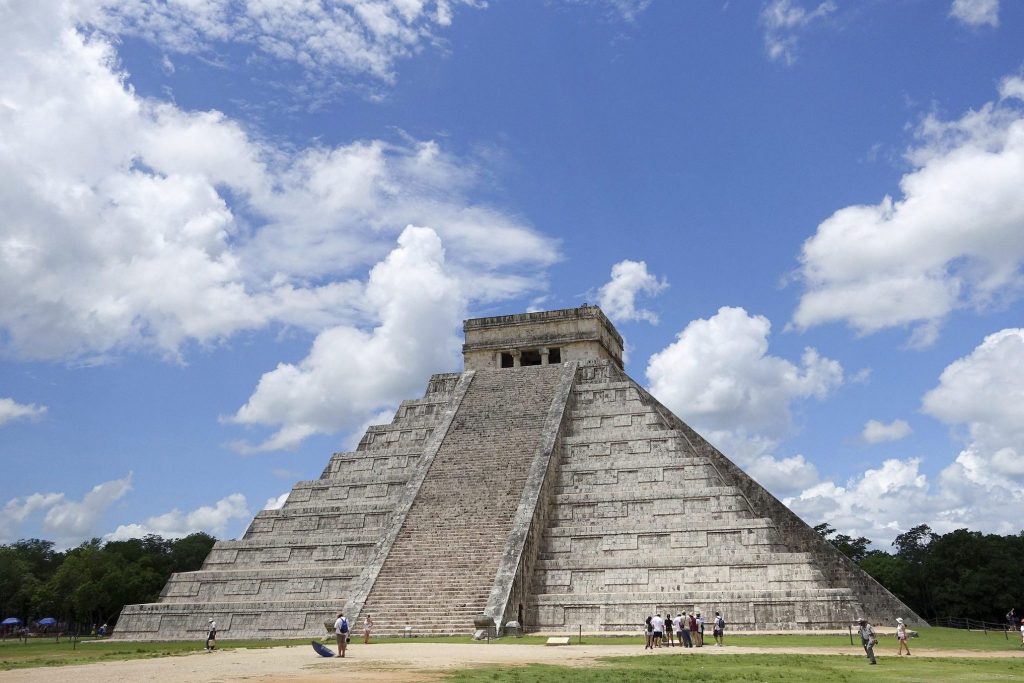Skift Take
Cuts to the Mexico Tourism Board are having an immediate impact on local operators in some of the country's most popular tourist destinations. A lack of marketing resources is especially difficult for some of the country’s smallest and often most alluring places.
Manuel Rodriguez was born in Tulum and spent the latter half of his 50 years in the Caribbean paradise pioneering tours ranging from scuba diving adventures to trips to Mayan ruins as the destination mushroomed into a global phenomenon.
Now Rodriguez, owner of Tulum Diving and Travel, finds the boom has suddenly turned into a bust, largely because of drastic cuts to the Mexico Tourism Board, which shuttered all but four of its 21 international offices and slashed marketing budgets.
“This is the worst I’ve seen in 15 years,” Rodriguez said. “There is no plan or action on how to promote all of the different things. They are doing absolutely nothing.”
The decision to decimate the Mexico Tourism Board, which is a key provider of marketing support, training, and tourism promotion, was announced in early 2019 by the new presidential administration of Andrés Manuel López Obrador to divert funds toward the construction of a new railway in the Riviera Maya.
Those cuts were quickly implemented and the effects were felt locally soon after, according to multiple local operators interviewed by Skift.
Significant Decline
In Cancun, where tourism is overwhelmingly the main industry, Alex Ojeda’s Kianha’s Sport Fishing Cancun has seen a “significant” year-over-year decline in customers.
It had already been a challenging situation selling Mexico as a tourism destination to North Americans following the election of Donald Trump and negative news of violence in the country, Ojeda said. Cuts to tourism marketing have exacerbated the decline in customers.
“Cancun doesn’t grow a tomato,” Ojeda said. “The whole population of town depends on tourists. It’s a horrible place when it comes to planning. There’s no backup. It’s too big to fail.”
Ojeda, who has run his fishing charter company in Cancun since 1993, said he lost 50 percent of his business in 2018 amid the negative news about Mexico in the U.S. He attributed additional losses this year to the sudden loss of tourism marketing support from the Mexican government.
“What we have right now as a government, there is nothing good that we can say about that guy,” Ojeda said, referring to President López Obrador. “They cut the budget for advertisement. It’s the main thing for Mexico. There are so many states that depend on tourism in Mexico. The biggest industry for Mexico is tourism.”
Lackluster Presence at ITB Berlin
Employees of Mexico City-based destination marketing company and tour operator Kamino Tours saw the effects firsthand this year when they showed up at ITB Berlin, the world’s largest tourism fair and a place to promote Mexican tourism to travel agents, hotels, and tour operators from around the globe.
“For the first time in 20 years, the Mexico stand was the most boring and plain stand in the whole fair,” said Bob Dijks, a manager at Kamino Tours who has worked with the company for five years. “They really felt like they were being left behind.”
This year, the Mexico stand was more or less empty, he said.
“Normally we would have a very eye-catching stand with big television screens showing amazing footage of Mexico,” Dijks said. “You would have a hostess serving drinks, coffee, tequila, and small Mexican snacks. You would have an entertainment team, mariachis.”
With Mexico’s tourism operators already fighting a negative worldwide image linked to violence, the lack of international marketing support means there is nothing to counterbalance this view, he said.
“The tourism board was an element to try to give people another perspective on Mexico,” Dijks said. “I’m afraid that’s going to disappear. There’s no funding. I personally don’t know who is going to take that over. Who is going to step up now and make sure Mexico keeps on being promoted?”
Smaller Destinations Hurt the Most
While major destinations like Cancun still get some marketing support from large hotels and resorts, tour operators in smaller destinations such as Tulum are especially challenged.
“[The government] should be promoting cenotes, culture, adventure, archaeological sites, zip lines, nature reserves,” Rodriguez said. “There are so many things to do. Tulum is the only Mayan city built on the waterfront.”
Instead, Rodriguez has taken things into his own hands and travels to international tourism fairs, including those in Berlin, Spain, and London, to promote his company with videos, postcards, and posters.
“It is sad what is happening,” he said.
The Daily Newsletter
Our daily coverage of the global travel industry. Written by editors and analysts from across Skift’s brands.
Have a confidential tip for Skift? Get in touch
Tags: experiences, marketing, mexico, tour operators, tourism, tours and activities, travel advisor innovation report, travel agents
Photo credit: In this July 22, 2016, photo, tourists are dwarfed by El Castillo at the Chichen-Itza ruins in Yucatan, Mexico. Local tour operators have seen business plummet because of the demise of the Mexico tourism board. Ross D. Franklin / Associated Press
